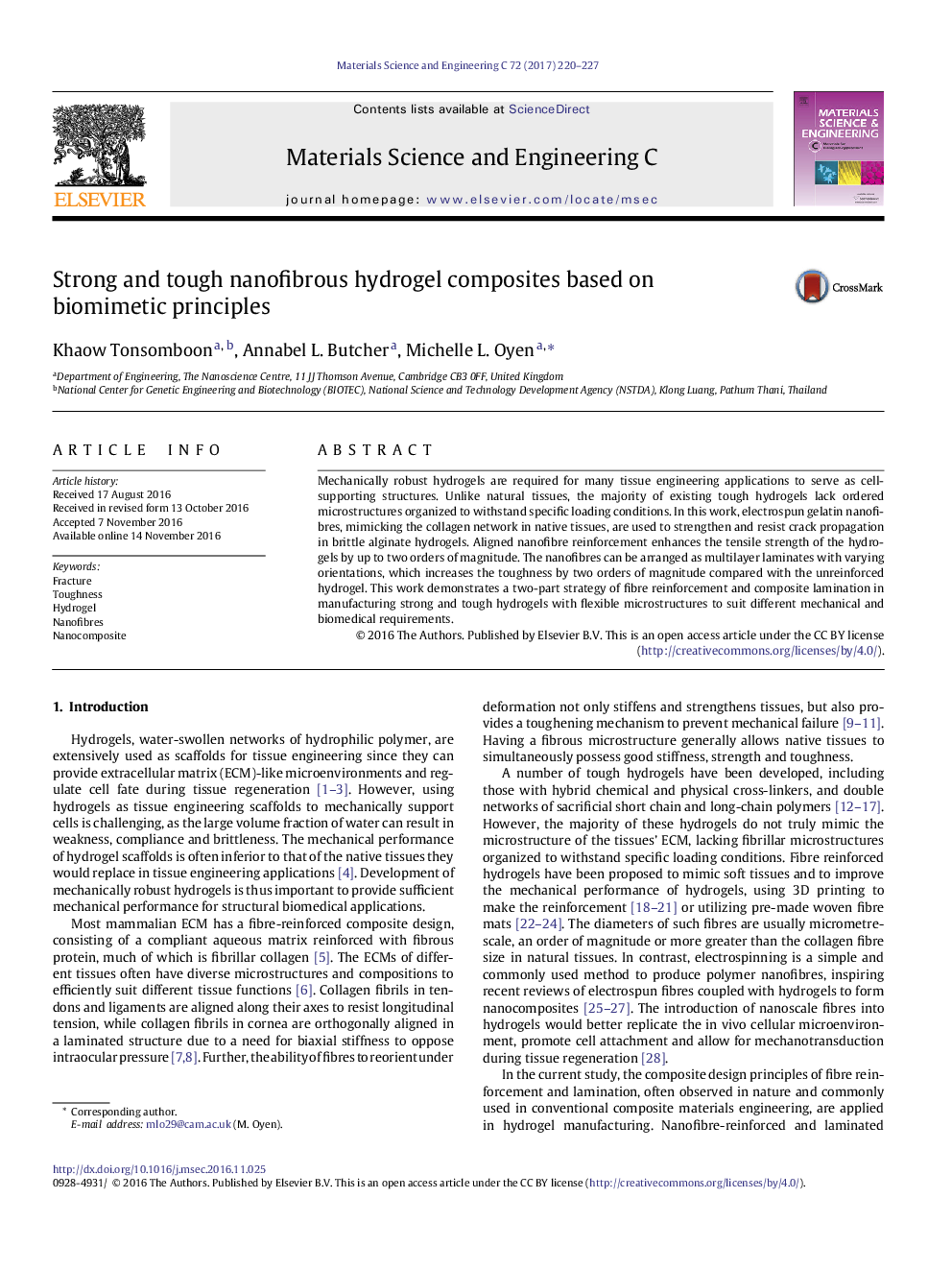| Article ID | Journal | Published Year | Pages | File Type |
|---|---|---|---|---|
| 5435198 | Materials Science and Engineering: C | 2017 | 8 Pages |
â¢Nanofibre-reinforcement gives an order of magnitude increase in hydrogel strength.â¢Laminating further increases the hydrogel toughness by an order of magnitude.â¢The composite's strength and toughness is similar to those of natural soft tissues.â¢This method can be applied to a range of fibre-matrix material systems.
Mechanically robust hydrogels are required for many tissue engineering applications to serve as cell-supporting structures. Unlike natural tissues, the majority of existing tough hydrogels lack ordered microstructures organized to withstand specific loading conditions. In this work, electrospun gelatin nanofibres, mimicking the collagen network in native tissues, are used to strengthen and resist crack propagation in brittle alginate hydrogels. Aligned nanofibre reinforcement enhances the tensile strength of the hydrogels by up to two orders of magnitude. The nanofibres can be arranged as multilayer laminates with varying orientations, which increases the toughness by two orders of magnitude compared with the unreinforced hydrogel. This work demonstrates a two-part strategy of fibre reinforcement and composite lamination in manufacturing strong and tough hydrogels with flexible microstructures to suit different mechanical and biomedical requirements.
Graphical AbstractDownload high-res image (173KB)Download full-size image
